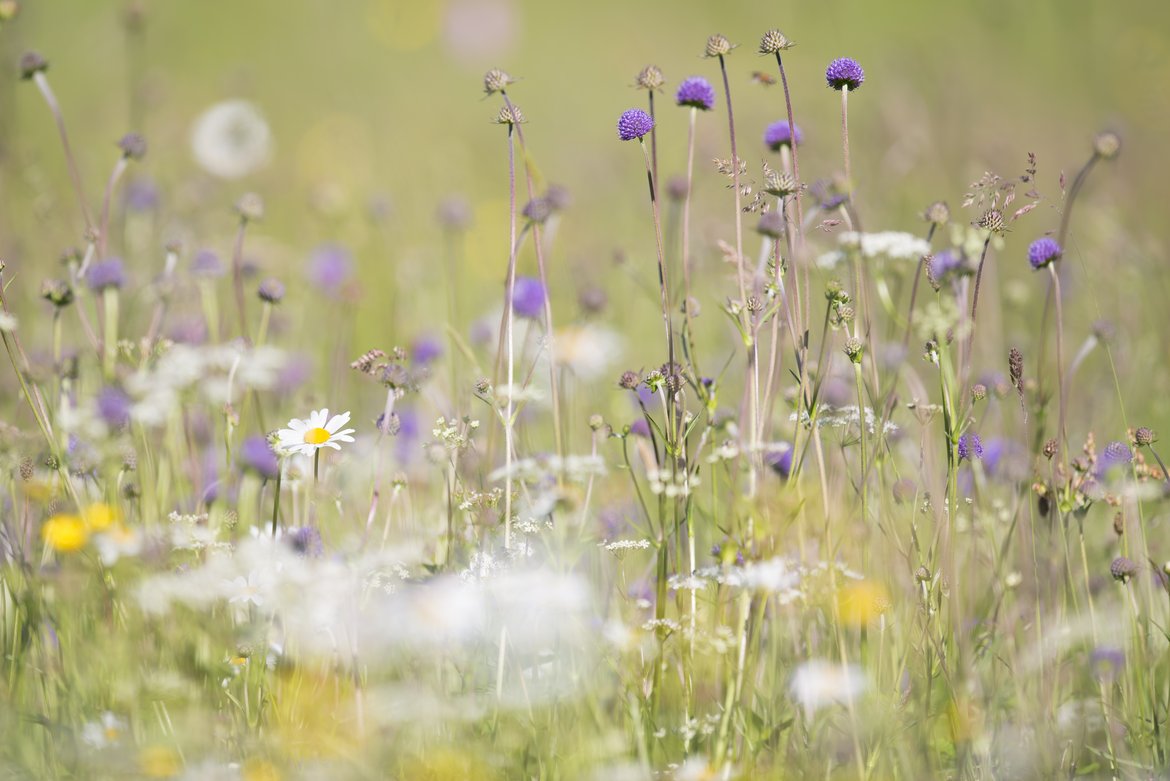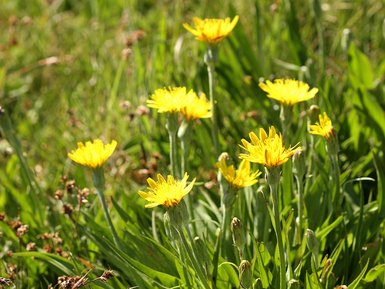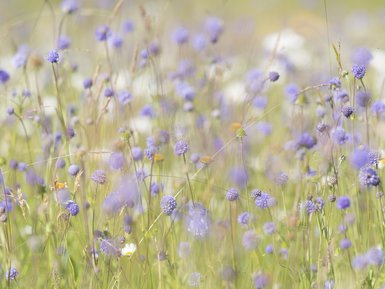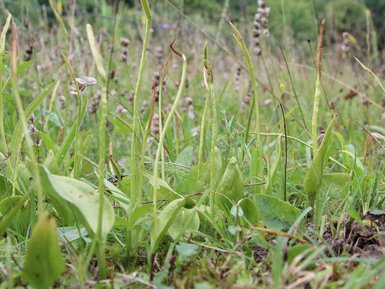Molinia meadows (Natura 2000 code - 6410)
Description
Molinia meadows are grasslands developing on nutrient-poor (oligotrophic) soils with a fluctuating groundwater level. Soggy in winter, the soil can dry out and crack in summer. Little dependent on the landscape, they can be found on plateaux as well as in depressions, in areas of seepage on gentle slopes or at the bottom of slopes. They are maintained by late mowing, or even forest mulching on certain sites.
These unfertilised hay meadows used to produce mediocre hay or litter, depending on the region. They were normally mown only once a year, often late in the season, when the soil had sufficiently dried out. They show fairly short vegetation, made up of grasses with a wide variety of flowers that have become rare.
As part of the project
The aim of the LIFE ArdennEislek project is to restore 18 hectares of mullein meadows: 10 hectares in the Walloon Region, and 8 hectares in the Grand Duchy of Luxembourg.
Some characteristic species
Molinia meadows have fairly low vegetation, composed of graminoid species: Velvet bent (Agrostis canina), Carnation sedge (Carex panicea), Flea sedge (Carex pulicaris), Sharp-flowered rush (Juncus acutiflorus), Compact rush (Juncus conglomeratus), as well as a wide variety of dicotyledons: Devil’s-bit scabious (Succisa pratensis), Dwarf scabious (Scorzonera humilis), Cambridge milk-parsley (Selinum carvifolia), Dioecious valerian (Valeriana dioica), etc.
When these meadows are still regularly mown, purple moor-grass (Molinia caerulea) is often discreet, and frugal species of wet hay meadows can then be found: Cuckoo flower (Silene flos-cuculi), Sweet vernal grass (Anthoxanthum odoratum), Yellow rattle (Rhinanthus minor), Sneezewort (Achillea ptarmica), etc.
Various variants have been described depending on the nature and base-richness of the soil. The variant of acid peaty or paratourbous soils is poorer in species but includes specific species such as Marsh gentian (Gentiana pneumonanthe) and Marsh hawk’s-beard (Crepis paludosa). It has a series of species in common with paratourbous narderies and acidic low marshes.
Several orchid species can be encountered here, the most common in the Ardennes being the Broad-leaved marsh orchid (Dactylorhiza majalis) and the Heath spotted-orchid (Dactylorhiza maculata).

© Xavier Janssens






